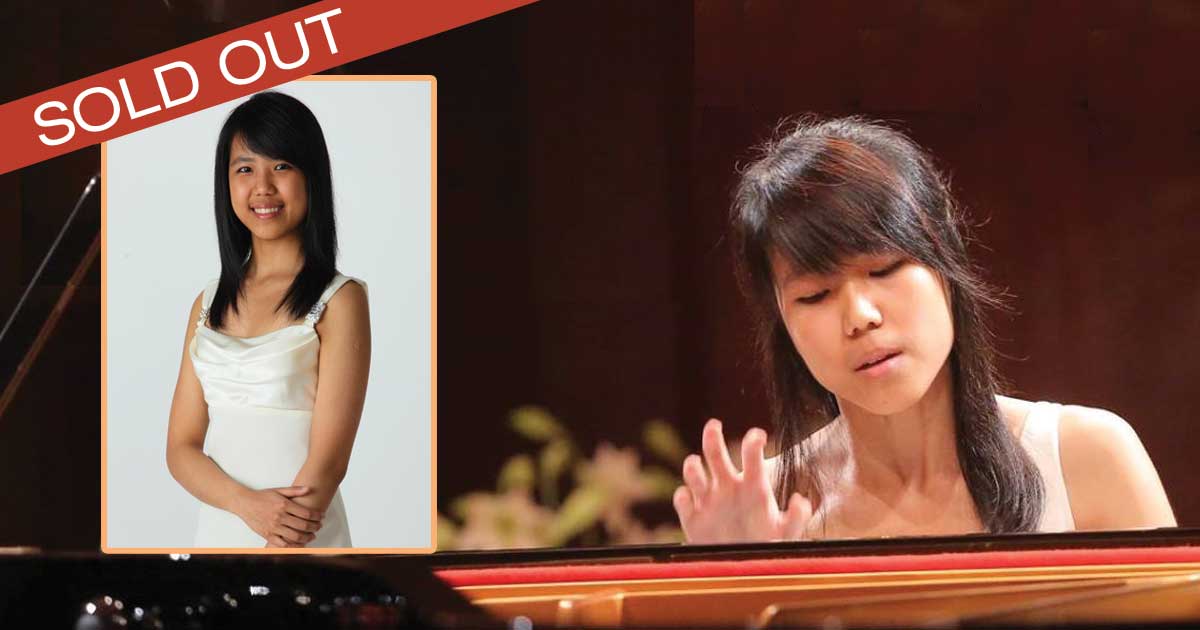
About
A fan favorite. First Prize winner at both the New York International Piano and the Asia-Pacific International Chopin Competition, Kate Liu has proven herself popular with audiences and judges worldwide.
At the 2015 Fryderyk Chopin Competition, judges awarded her the Bronze Medal, but in public opinion she was number one: listeners voted her Best Pianist in the radio competition “My Chopin.”
In 2011 Liu was featured on PBS’s “From the Top at Carnegie Hall” and Carnegie Hall’s Big Break (YouTube contest). In addition to ongoing piano studies at Curtis Institute, she was named a 2018-19 Gilmore Rising Star.
Program
- Moderato cantabile molto espressivo
- Allegro molto
- Adagio ma non troppo–Arioso dolente–Fuga: Allegro ma non troppo–Arioso–Fuga
- Andante-Allegro
- Andante
- Intermezzo
- Andante con moto
- A minor
- A Flat Major
- F sharp Minor
- Andante dolce
- Andante sognando
- Vivace
Program Notes
Beethoven began writing Op. 110 in the spring of 1821 and finished it by December of that year. Though by now deaf, he continued to compose ever greater works, channeling his unending imagination in new directions. In his five late piano sonatas (Opp. 101, 106, and 109–11), the composer experimented with formal structure. The works also exploit innovative sonorities, sometimes containing several successive measures of shimmering trills, a colorful device that would later be adopted by other great Romantic composer-pianists such as Liszt.
Op. 110’s opening movement in A-flat major is compact, with a cantabile (singing) melody; the movement is contemplative and modestly sized, rather than boisterous and expansive as some of the composer’s Middle Period opening movements had been. The first theme reappears throughout the sonata, but its calm proves illusory. The second movement, a scherzo in F minor, opens with a fiery call and response and tumbles with increasing energy towards its dramatic conclusion. An F-minor coda of sforzato chords separated by measure-long rests presents an efficient summary; the coda concludes with a surprising and dramatic diminuendo and poco ritardando in the final cadence’s parallel major key.
An adagio introduction to the third movement gives way to a somber song of lament (“Klagender Gesang”) in the dark key of A-flat minor, a lyrical preparation for the finale’s main event, a weighty fugue in A-flat major whose subject is derived from the first movement’s opening theme. An even more intense adagio cry of despair precedes a second fugue whose subject inverts that of the first fugue. The motion becomes ever faster, and the sonata ends in an A-flat major coda of broken chords and a flurry of glistening arpeggios in a final and triumphant outburst of joy.
The Four Ballades, Op. 10, are the work of the ardent young Brahms, full of passion, drama and lyrical beauty, characteristic of the full flowering of German romanticism. Brahms’s Ballades aim to tell stories through music- as do the more well-known Ballades of Chopin-but specific stories are unknown, with the exception of the first one, “Edward”, which is based on a Scottish ballad. Edward’s mother inquires why Edward’s sword is stained with blood; as her questions become more persistent, the horrible truth comes out; he has killed his father. The intense drama of the music befits the tale. The second Ballade is the most varied of the set, and has all the makings of a bedtime story, with various dramatic episodes, though everything ends quite peacefully. The child presumably has fallen asleep. The third piece if not really a Ballade at all, but a fiery Intermezzo filled with angular rhythmic displacements. Its interlude reflects the majestic spaciousness characteristic of early Brahms. The fourth Ballade is clearly a sung story rather than a spoken one. The most extraordinary feature of this work is its concluding section in triplets, a prolonged intimate meditation. It is both sublimely beautiful and deeply moving.
Mazurkas, Op. 59 are a set of three Mazurkas for solo piano.. The set was composed and published in 1845. Although Chopin spent most of his adult life in Paris, his roots were Polish. In homage to his homeland, he developed two genres of music, the polonaise and the mazurka. The mazurka takes much of its form from the native folk songs and dances of Poland, specifically the Mazur, the Kujawiak and the Oberek. The unusual rhythmic patterns and irregular accents provided the basis for 57 mazurkas in total, each unique in character and texture. This particular genre, more than any other, encouraged Chopin to revise and experiment freely. Unlike many of his other mazurkas collections, the pieces of Op. 59 do not contrast greatly amongst themselves. They share similar characteristics and textures, perhaps meant to unify the collection.
Sergie Prokofiev’s Piano Sonata No. 8 was composed in 1944 and was first performed in Moscow by Emil Gilels. The sonata met with considerable praise and was awarded a Stalin Prize. Hailed as one of the greatest works of the 20th century, Sviatoslav Richter hailed it as Prokofiev’s greatest contribution to the sonata “the richest of all- an abundance of riches”. Barbara Nissman said “a masterwork of the 20th century keyboard literature-it expands the sonata not only in terms of structure but as a total concept; it is the equivalent of a large scale symphony for piano”.
The first movement is marked “dolce” and lives up to the composer’s own statement that the sonata is primarily “lyrical in character”. The development increases in intensity and reaches a significant climax only to return in the recapitulation to the initial dolce opening. The second movement “andante sognando” is dream-like accompanied by some typically Prokofiev-style harmonies. The finale is in a 3 part form. The inner section revisits material from the 1st movement while the outer two sections are energized by triplet movement and forceful octaves.